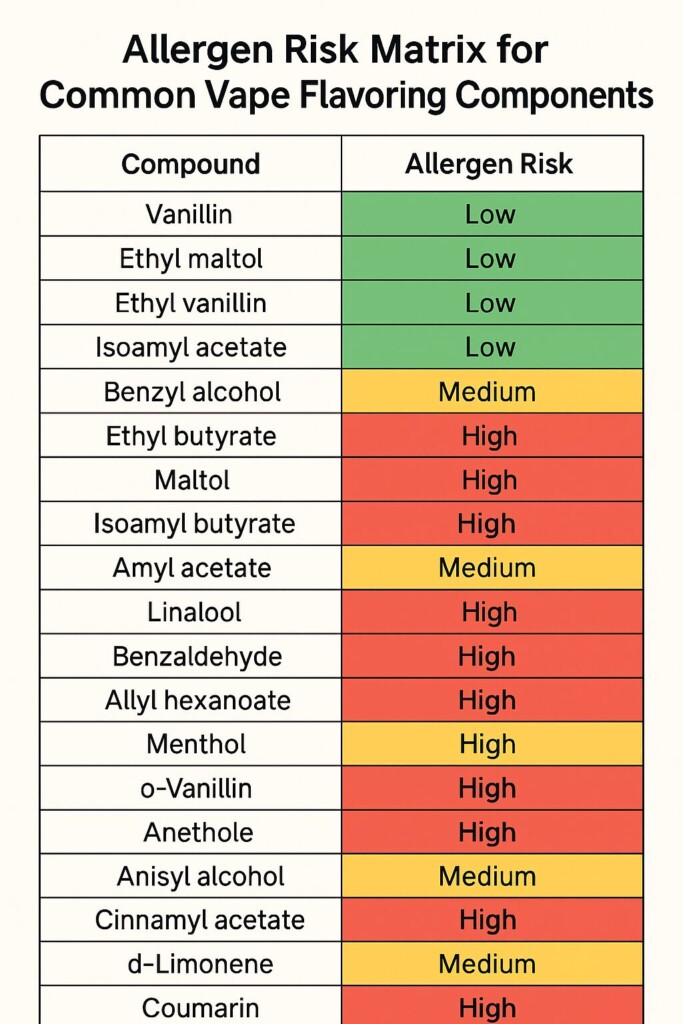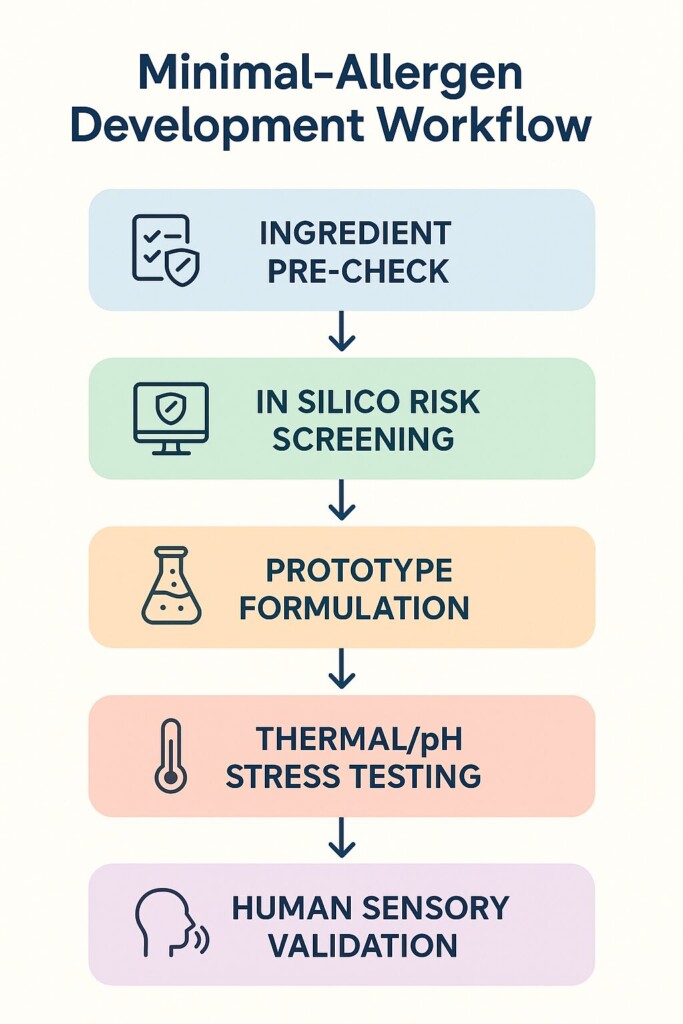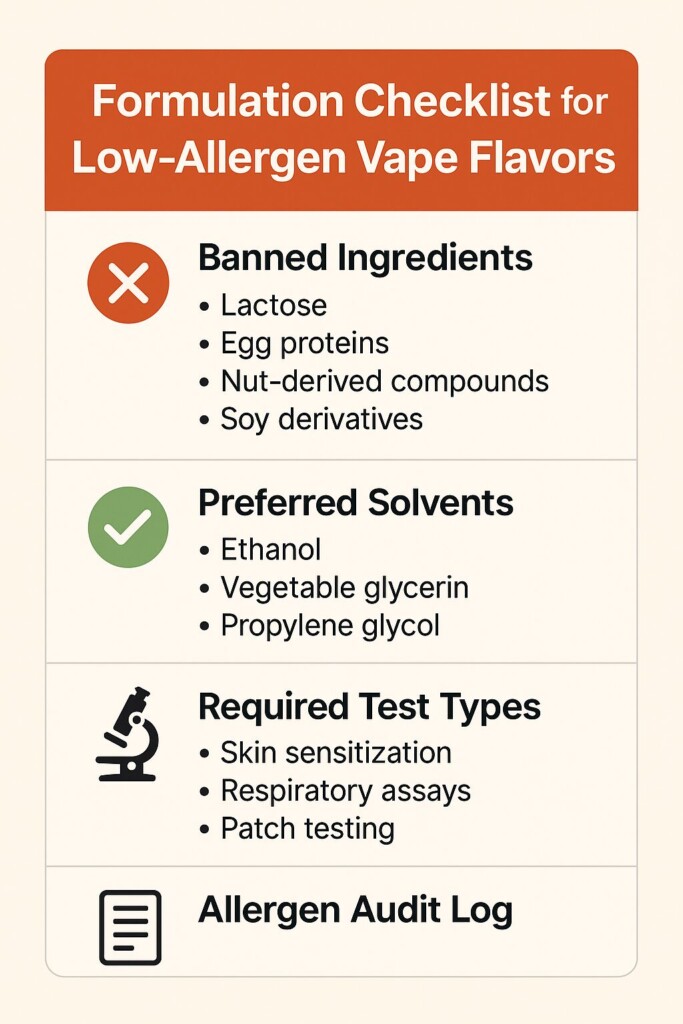In recent years, the vaping industry has seen a clear shift in consumer expectations — not just toward better flavor or smoother hits, but safer, cleaner formulations. As more users become health-conscious and regulatory scrutiny intensifies, there’s growing demand for low-allergen flavor systems in e-liquids. From avoiding known sensitizers to eliminating hidden ingredients that may provoke allergic reactions, flavor chemists and vape formulators are now embracing minimal allergen formulation strategies.
This article explores the technical, regulatory, and sensory considerations behind building clean label vape flavors that meet modern safety expectations without compromising taste.

Rising Search Interest for ‘Allergen-Free E-liquid’ (2018–2024)
Flavor allergens in vaping systems may originate from multiple sources, including natural extracts, synthetic additives, or cross-contamination during manufacturing. These can provoke responses ranging from mild throat irritation to full-blown allergic reactions.
A recent study by the European Respiratory Journal noted that over 7% of surveyed e-cigarette users reported signs of flavor sensitivity, with symptoms like skin rashes and wheezing being most common.
Low-allergen flavor development must align with global regulatory frameworks. Different markets impose varied restrictions and disclosure requirements.
Actionable Tip: Conduct a GRAS (Generally Recognized As Safe) audit not just for safety, but also allergenicity.
Proactively avoid common sensitizers from initial design:
Use ingredients with a proven safety track record:

Allergen Risk Matrix for Common Vape Flavoring Components

Minimal-Allergen Development Workflow
Consumers want to know what’s in their e-liquid — and what’s not.
Branding Angle: Transparency improves trust. Studies show clean-labeled vape products enjoy 22% higher customer loyalty in North America and EU regions.
Coating sensitive ingredients in natural polymers or cellulose to reduce exposure on inhalation.
Use machine learning models to screen molecular allergenicity based on structural alerts and metabolic simulation.
Fermentation-derived flavoring agents often eliminate the need for solvent carriers or protein traces from plant sources.
CUIGUAI Flavoring, a China-based innovator in e-liquid formulation, has developed a line of vape-specific, low-allergen flavorings. These are free from common sensitizers, heat-resistant, and independently tested for respiratory safety — supporting clean-label claims in both Western and Asian markets.
Challenge: Create deep tobacco note without allergens like eugenol or oak extract.
Solution: Blend acetyl pyrazine + synthetic iso-tobacco ketone.
Challenge: Linalool and limonene are potent allergens.
Solution: Use analog esters with higher oxidative stability, remove terpenes.
Challenge: Dairy and nut traces often found in ‘natural’ extracts.
Solution: Switch to synthetic vanillin, diketone-free creamy backnotes.
Low-allergen vape flavorings are not a niche trend — they are the foundation of future-ready product design. Safer for users. Simpler to label. Aligned with regulators.
By combining intelligent ingredient selection, rigorous testing, and clean-label transparency, formulators can meet both market demand and compliance goals.
Design for purity. Deliver with integrity.

Formulation Checklist for Low-Allergen Vape Flavors
Tags: low allergen flavor, clean label vape, minimal allergen formulation, CUIGUAI Flavoring, allergen-free e-liquid, vape formulation safety
Keywords: low allergen flavor, clean label vape, minimal allergen formulation
Author: R&D Team, CUIGUAI Flavoring
Published by: Guangdong Unique Flavor Co., Ltd.
Last Updated: Jun 4, 2025
The business scope includes licensed projects: food additive production. General projects: sales of food additives; manufacturing of daily chemical products; sales of daily chemical products; technical services, technology development, technical consultation, technology exchange, technology transfer, and technology promotion; biological feed research and development; industrial enzyme preparation research and development; cosmetics wholesale; domestic trading agency; sales of sanitary products and disposable medical supplies; retail of kitchenware, sanitary ware and daily sundries; sales of daily necessities; food sales (only sales of pre-packaged food).
Copyright ©Guangdong Unique Flavor Co., Ltd.All Rights Reserved. Privacy Policy